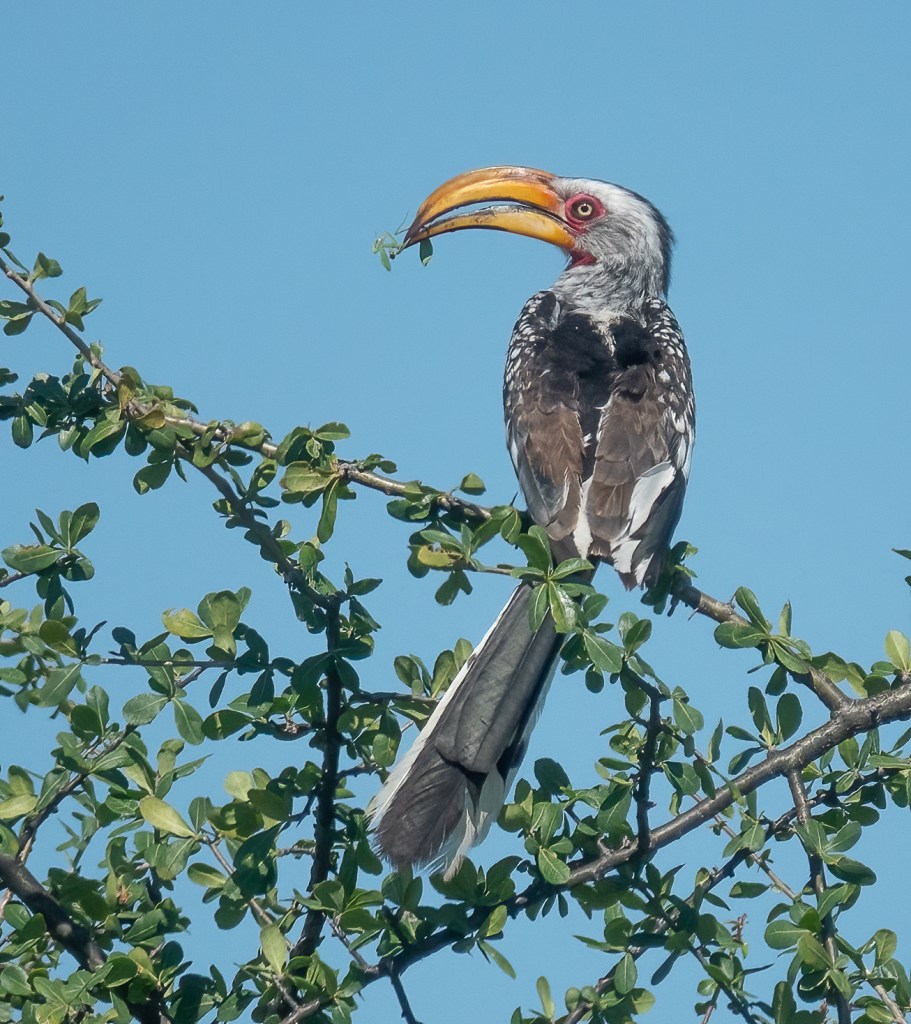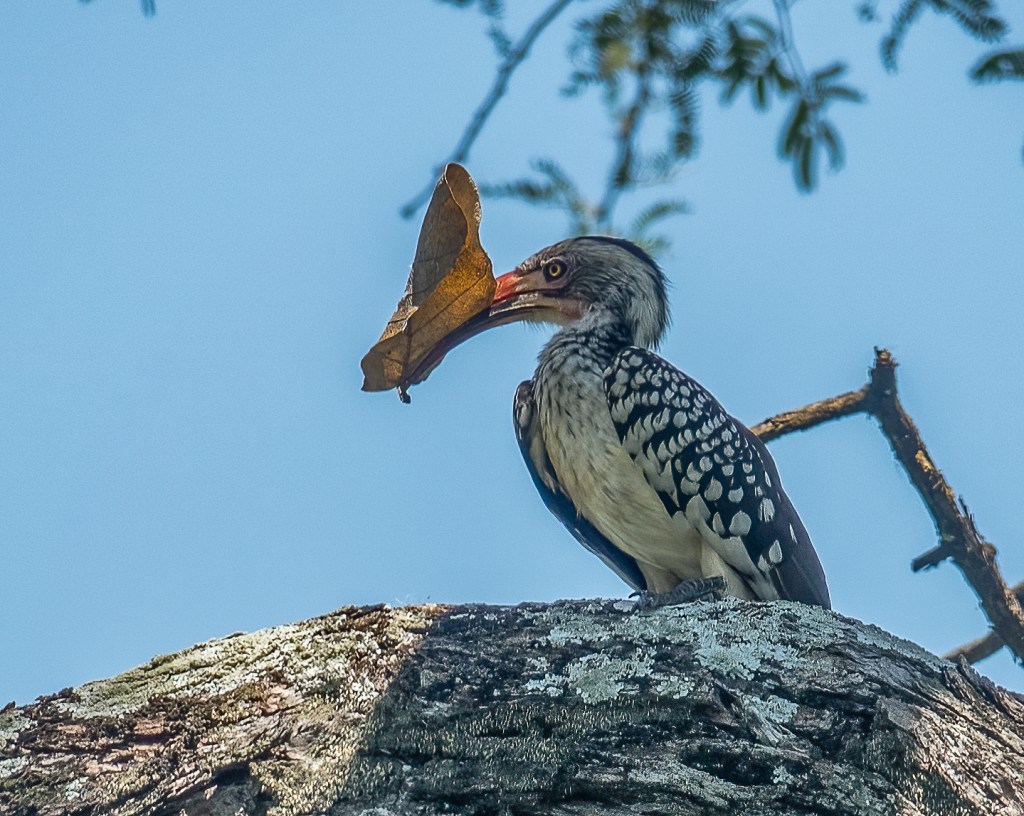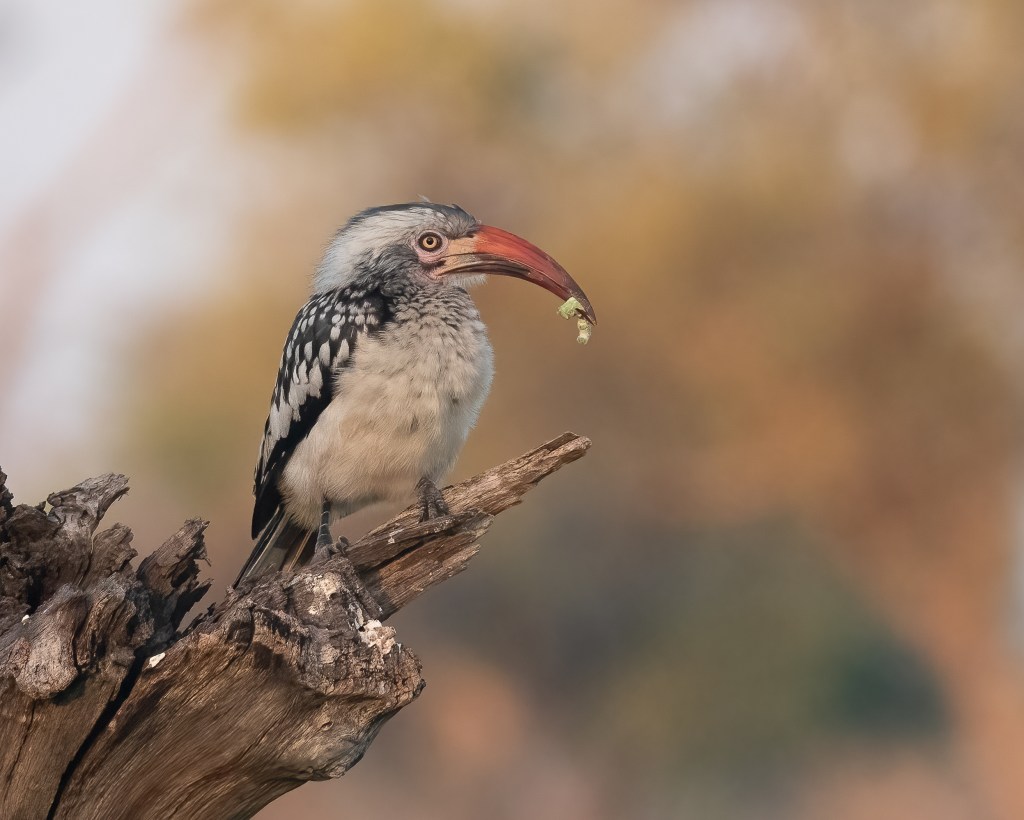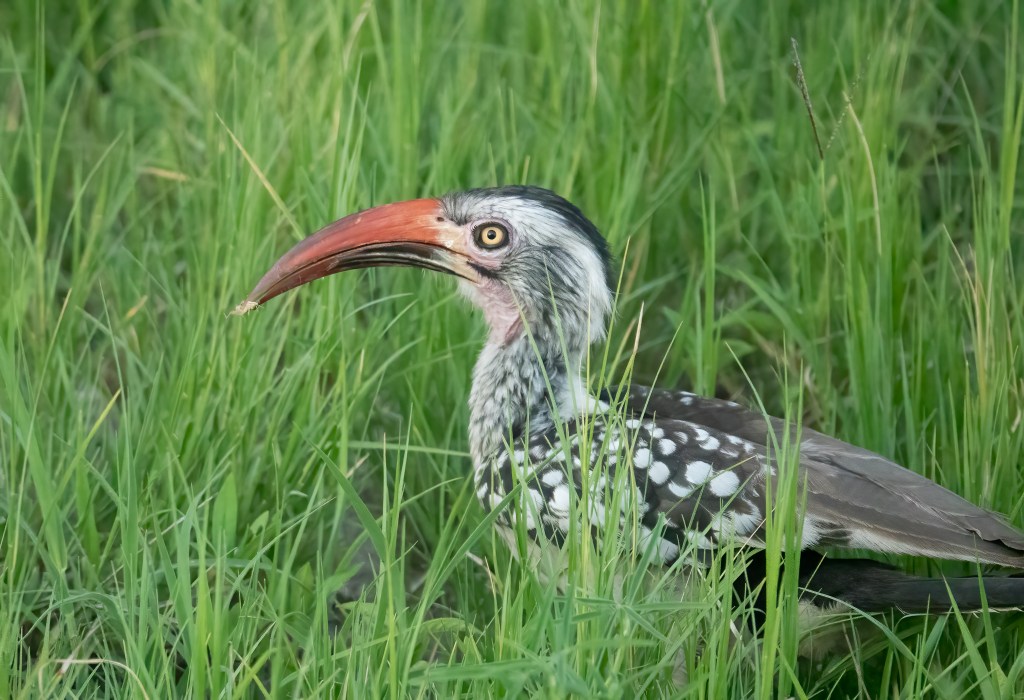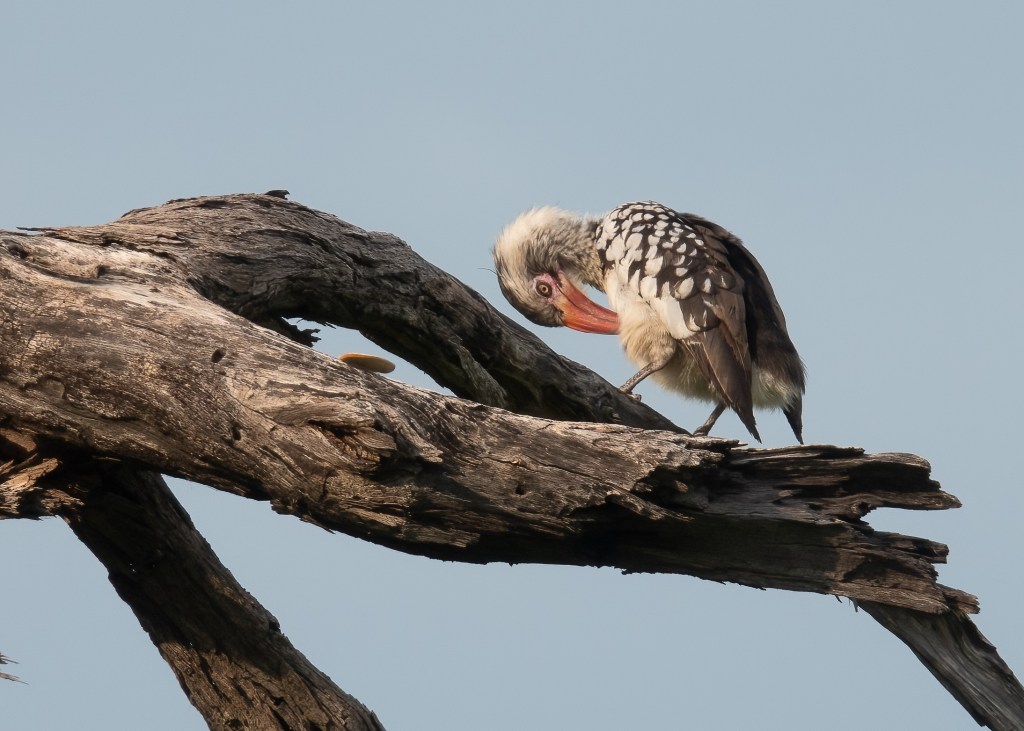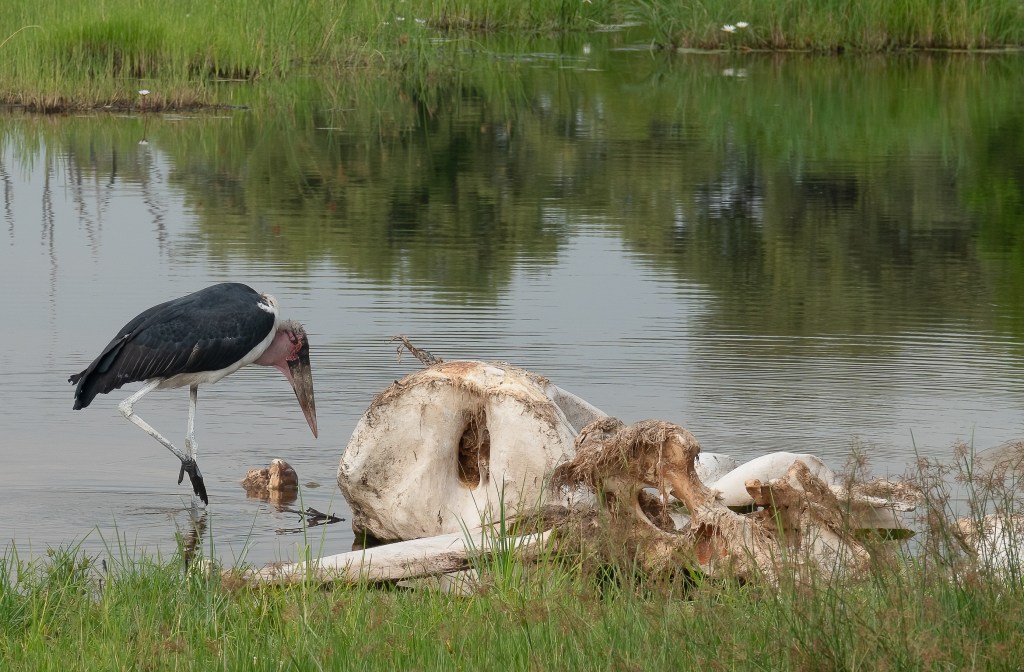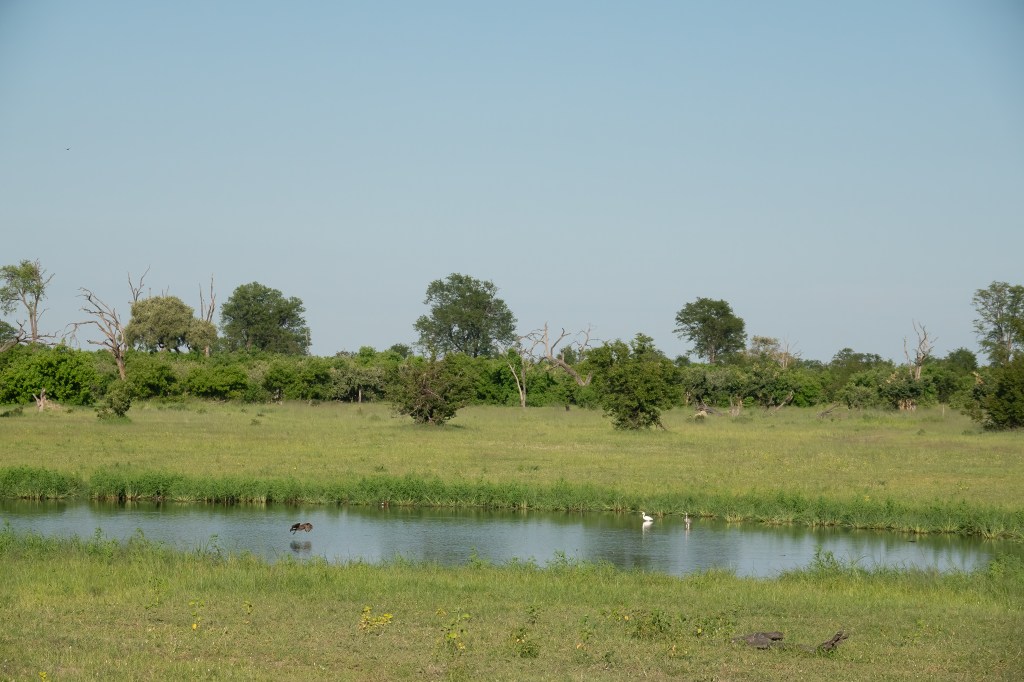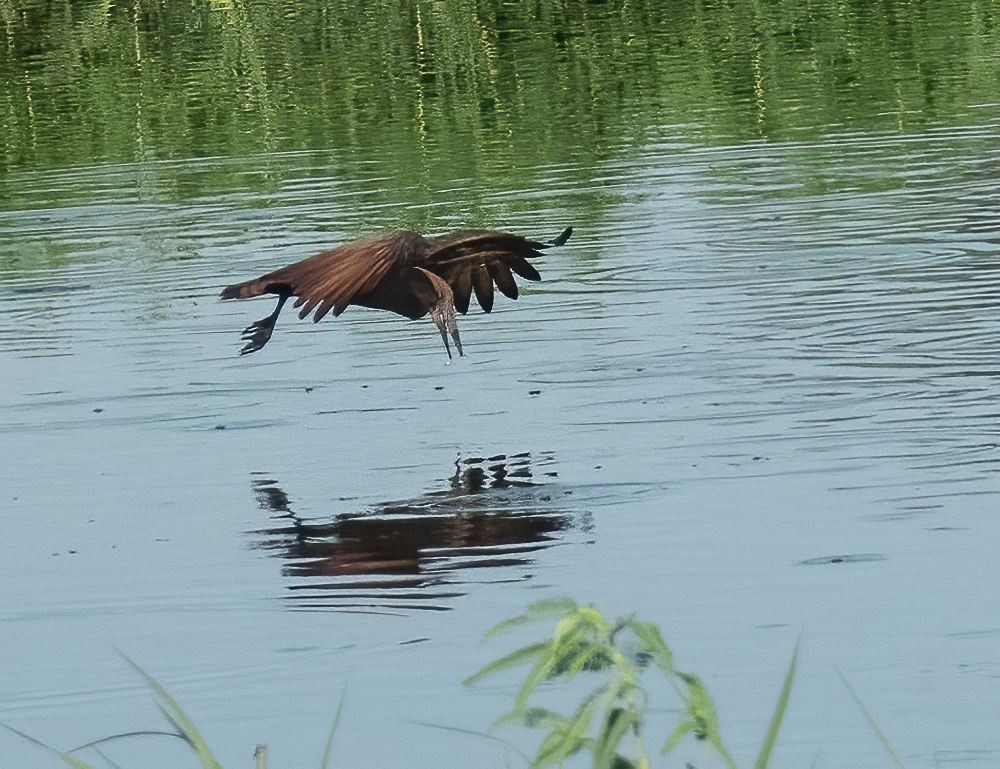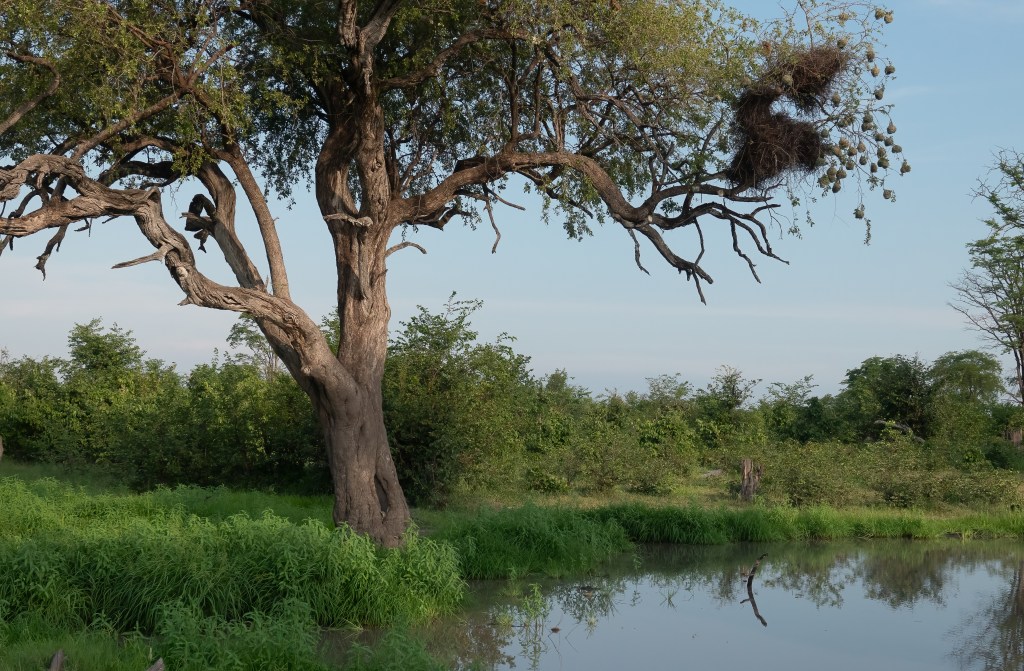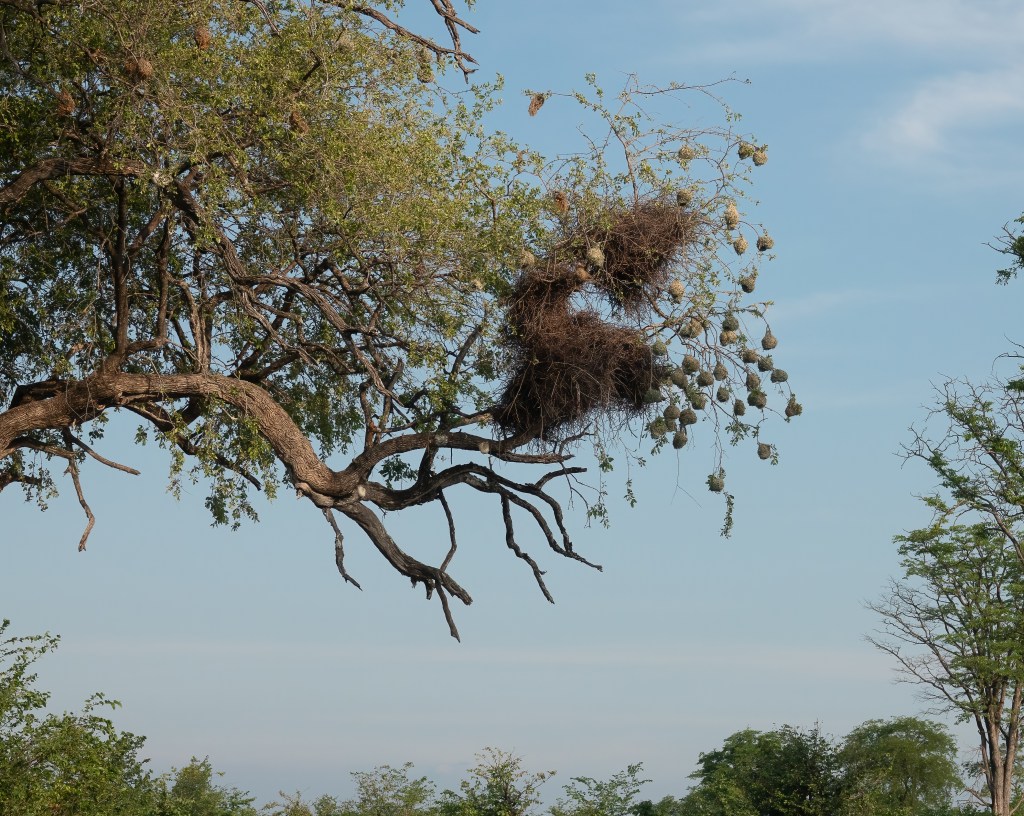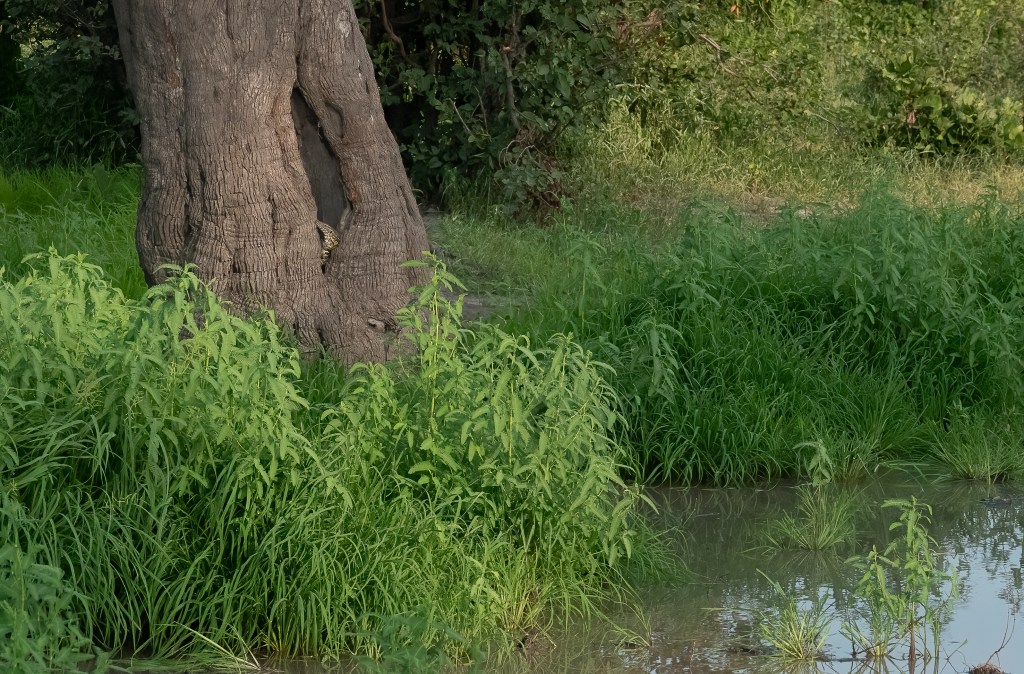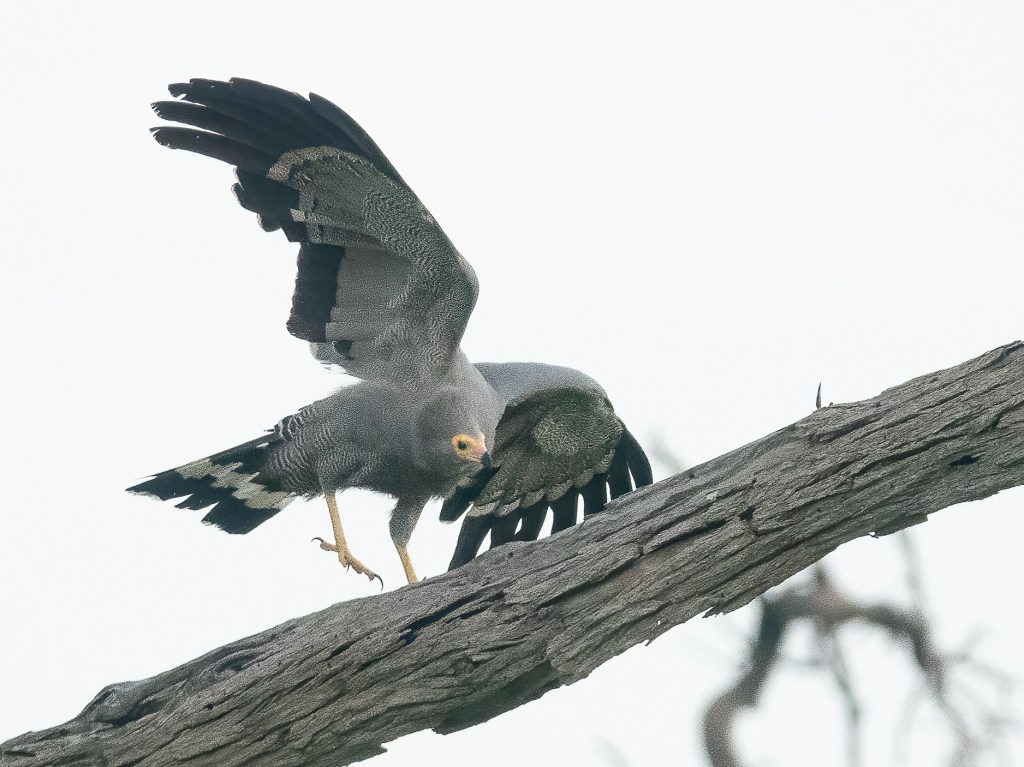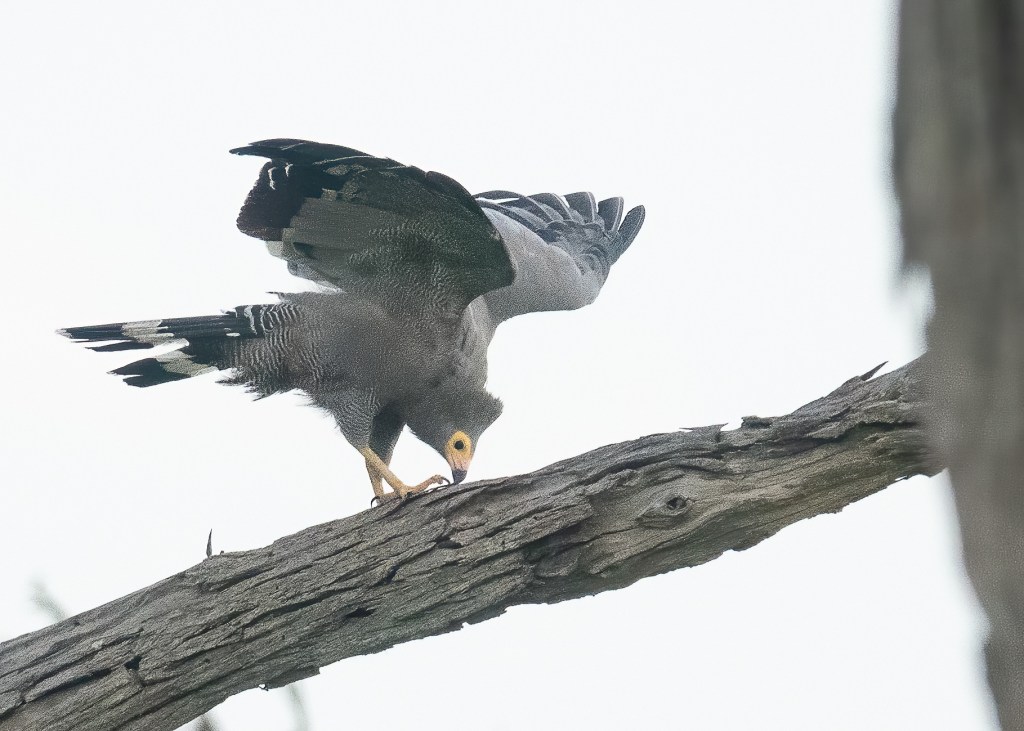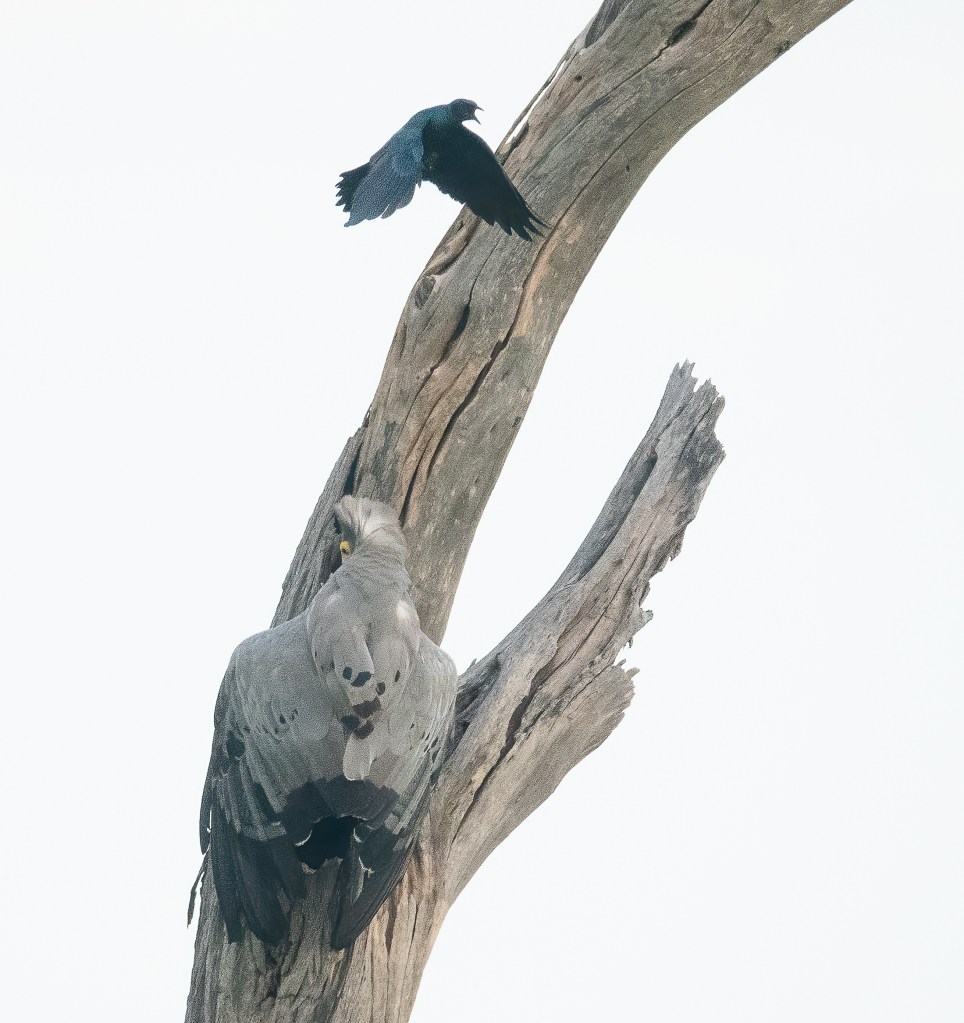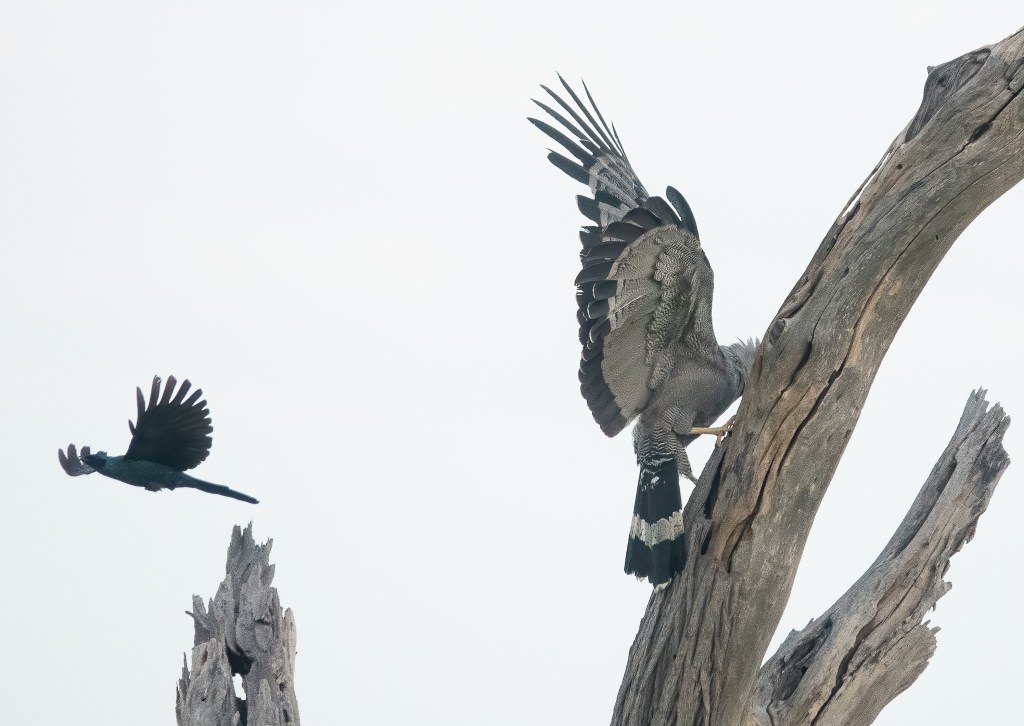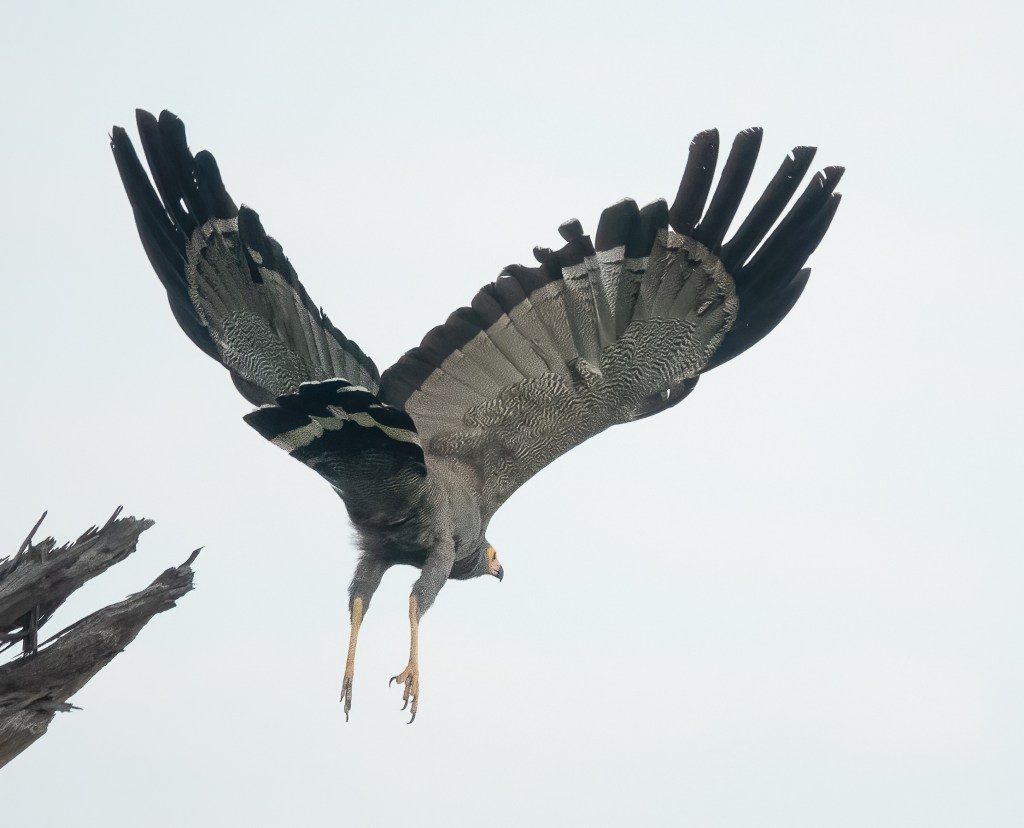I still have more to show you from Botswana, but spring is finally here in Lovell, and I have a few things to share with you. Today, my topic is waterbirds.
Ducks pass through here en route to breed in Canada. The males are in breeding plumage, so they look very smart. Here is a ring-necked duck, a close relative of the UK’s tufted duck

and a pair of buffleheads:

In flight, you can see that the two buffleheads closer to the camera are much smaller than the ring-necked ducks behind them.
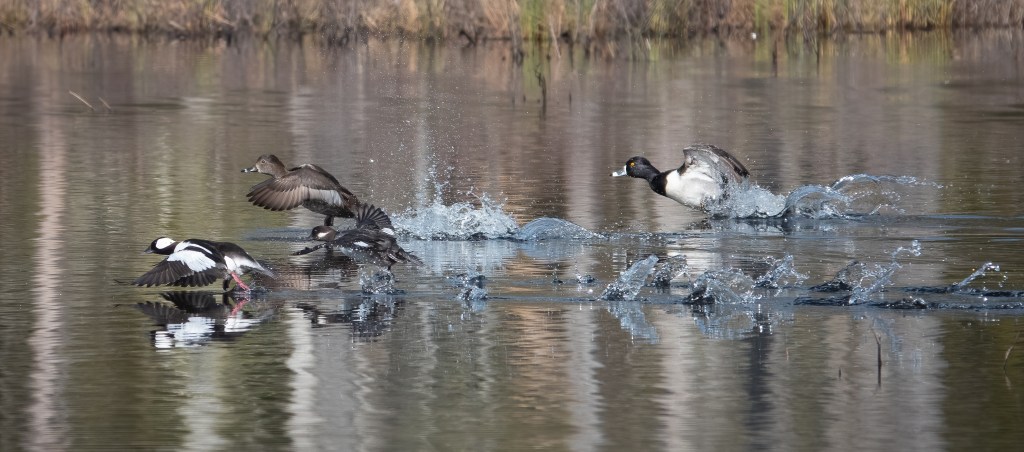
One male had a head patch that was half white and half grizzled gray. I haven’t been able to find out if this is a juvenile, or an unusual variant . He is staring into the depths below.

A little stretch:
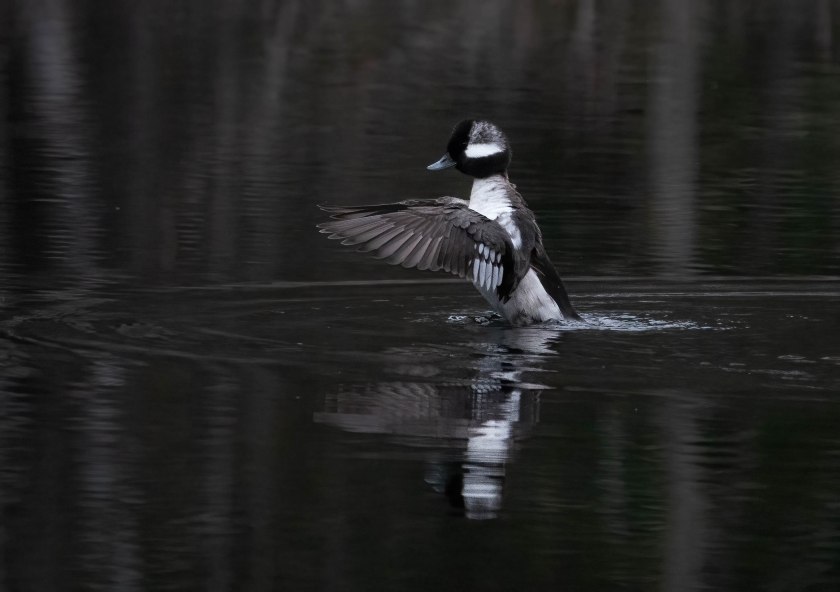
and a wave of his deep magenta feet:
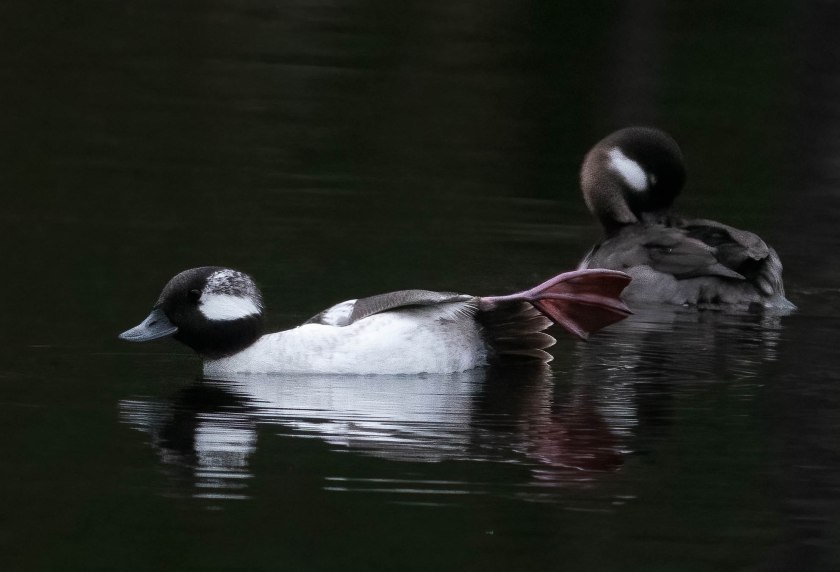
Other types of duck stay and breed here, like the hooded mergansers:

And don’t ignore the mallards. For most of my life I thought all ducks were mallards. and although I know better now, they are still among my favorites. This pair were having a private moment on a tiny secluded pond deep in the woods, and they strayed into a sunbeam.

Great Blue Herons stay all summer. In years of watching them, I had never seen one actually catch a fish until last week. As luck would have it, I was in the midst of moving to get a better angle, so this photo is rather wobbly.
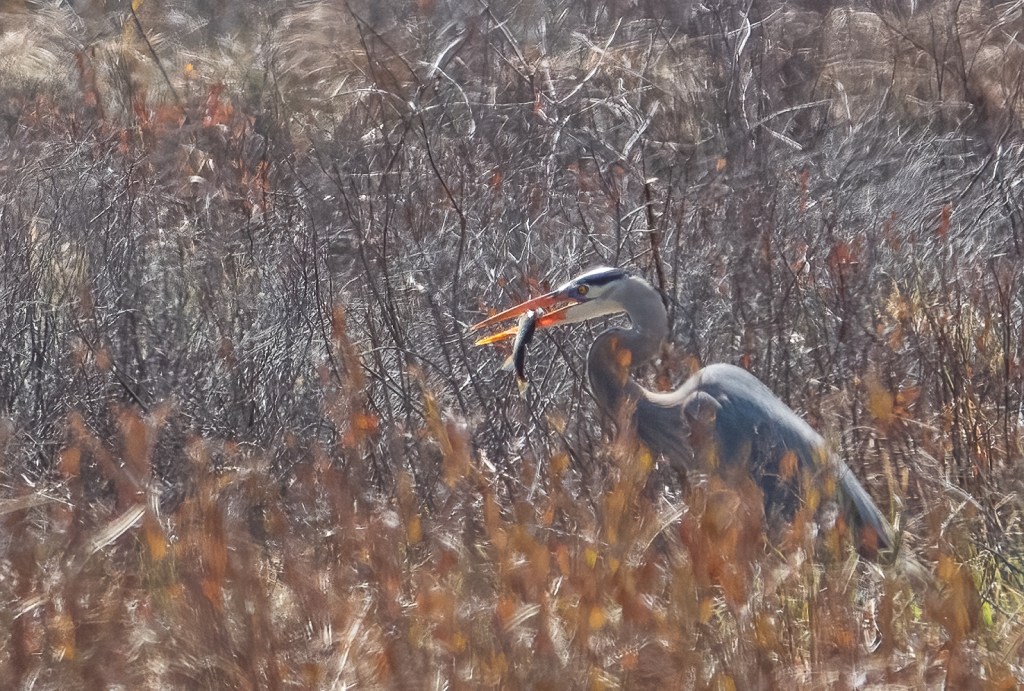
Next time, I’ll move on shore.
